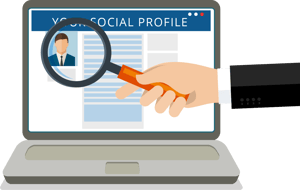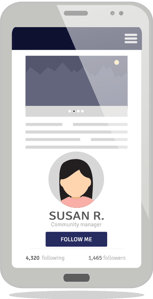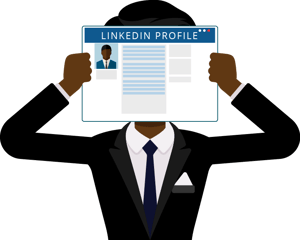LinkedIn has become more than just a social networking platform. It is an important tool in building your professional brand and showcasing your expertise and background. Whether or not you’re actively looking for a job, it’s likely recruiters—as well as potential clients and candidates—are checking out your profile, making it imperative you are thoughtful about your online presence. In addition, LinkedIn can serve as a valuable professional development tool, opening you up to thought leadership content, new ideas, potential mentors and other industry connections.
 No matter how you use LinkedIn, it’s important to have a strong profile that highlights your accomplishments and areas of expertise. Here are a few ways to make sure you’re putting your best foot forward and reaping all of the platform’s benefits.
No matter how you use LinkedIn, it’s important to have a strong profile that highlights your accomplishments and areas of expertise. Here are a few ways to make sure you’re putting your best foot forward and reaping all of the platform’s benefits.
Create or refresh your LinkedIn profile.
First things first. In today’s connected, social media-driven environment, not having an online presence could be a red flag, especially for recruiters. If you do nothing else, create a profile with your photo, current and past positions, and education. If possible, use a professional-looking photo of just you (no selfies, pets or half cropped-out friends and family). Aim to connect to at least 100 individuals; this shouldn’t be too difficult as LinkedIn suggests potential connections based on your alma mater and employment history. Even if you already have a profile that meets these criteria, take some time to make sure your information is still relevant and current. If you’ve neglected LinkedIn for the past few years, it’s likely time to give your profile a refresh.
 Build out the basics.
Build out the basics.
Once you’ve created a profile, provide additional information on your background, previous positions and accomplishments. Unlike a standard resume, you have the freedom to share a bit of your personality on LinkedIn. Talk about your roles and accomplishments in the first person. Make sure to also include professional designations and any continuing education programs you’ve completed or are currently undertaking. If you’re a remote worker and located in a city different than your employer, share that as well.
Be clear and strategic.
Especially as you advance in your career, there’s no doubt you could include a laundry list of past responsibilities. However, think about your profile from a strategic standpoint; where do you want to be in the next five or 10 years? What information is relevant in helping you get there? If your position descriptions get too long, make sure you consider what aligns to your future goals and leave out anything that will be a distraction. If you are looking for a new job, think like a recruiter and use common, searchable terms. Additionally, make sure your title and summary are clear and provide concise information about what you do and where you want to be.
 Highlight accomplishments and projects.
Highlight accomplishments and projects.
When adding descriptions to your experiences, don’t simply copy and paste a job description. Instead, opt for around five bullet points that share your accomplishments and demonstrate your leadership capabilities. Make sure to include any systems you helped implement or other relevant special projects that may be outside of your day-to-day responsibilities. Think of these descriptions as easy-to-read highlight reels and include numbers and stats to quantify impact.
Show your work.
LinkedIn enables users to upload files, post photos and share links. By providing tangible multimedia content, you’re giving your network and potential employers a better understanding of your past projects and achievements. Use this feature to your advantage and share examples of work you’re most proud of, when possible.
Create an eye-catching summary.
The first thing someone will see when viewing your profile is your summary. This should be professional, but also show off your personality. This is a great place to highlight special skills and accomplishments that may not fit elsewhere on your profile, or to share long-term future aspirations.
Review your account settings
By clicking on “Me” in the top LinkedIn navigation, you’ll have the option to view your account settings and privacy. First, set a custom url that includes your name and is easy to share. Next, take a moment to review your settings and ensure you’re comfortable with the amount of information provided to other professionals. You’ll be able to adjust what information is public, who can see your updates and contacts, how you appear when viewing others’ profiles and more.

Join groups.
There are many benefits to joining LinkedIn groups. They help you connect with other individuals in the industry and provide a platform for sharing ideas and advice. Join groups that match your interests and actively participate in them. In addition to building your industry authority, you’ll be showcasing your expertise to potential employers and recruiters. Even if a recruiter doesn’t find you through a search, they may be involved in the same groups as you, helping them gain a better understanding of your interests and career path.
Engage with your network.
You have a profile, you’re involved in groups and you have a healthy list of connections. The next step is to take a few minutes every day or so to engage with your network. Comment on posts, share articles and offer your expertise. With a minimal amount of effort, you can stand out from the crowd, while also staying in touch with your network and updating them on your current projects and passions.
 Leverage job search features.
Leverage job search features.
There are a variety of features and tools available on LinkedIn to help you connect with recruiters and land your next role. For instance, if you are looking for a new position, you can alert recruiters by noting this in your account settings. Most recruiters, both on the corporate side and within staffing firms, use LinkedIn to help find potential candidates. There’s also a job search function on the platform, where you can proactively search for positions, along with more advanced options to directly message recruiters.
LinkedIn is an important tool, whether you’re embarking on a job hunt or looking to build your professional network and brand. By being thoughtful about your profile, sharing strategic content and engaging with your network, you’ll ensure you are adequately demonstrating who you are and where you’re aiming to be as a professional.


